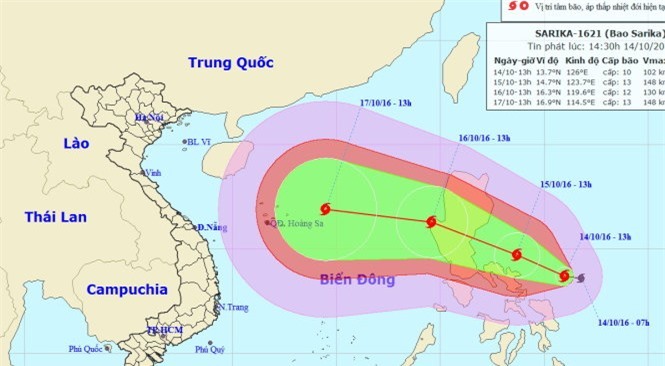According to Phan Van Tan from the Hanoi University of Natural Sciences, the smaller the weather phenomenon and the shorter the time, the more difficult it is to predict.

It is still impossible to predict many weather phenomena such as heavy rain, whirlwind and local rain. To make weather forecasts, researchers need to have data describing the state of the atmosphere and the Earth's surface.
The forecast quality depends on the processing of information received in real time from the monitoring system, including satellite devices, radar, weather stations, ships, surveillance aircraft and air balls, and applying a numerical model.
|
The forecast quality depends on the processing of information received in real time from the monitoring system, including satellite devices, radar, weather stations, ships, surveillance aircraft and air balls, and applying a numerical model. |
The initial conditions of the atmospheric state are the decisive factor that determines the accuracy of the forecasting, because initial errors may be amplified in a way that is called the ‘butterfly effect’.
Tan said the weather forecasting quality heavily depends on input data. The data Vietnamese researchers have are different because it is from various sources and collected by different monitoring equipment.
Data assimilation is necessary in order to integrate the data into a relatively homogeneous collections of materials which will be later be put into calculation.
Yet, like other issues in meteorological and climate research in Vietnam, data assimilation is a not easy to do. First, the data assimilation depends on what data researchers can collect and if they are accurate and detailed. In order to collect sufficient input data, it is necessary to install networks of 24/24 hour monitoring stations, especially in areas where flash floods and landslides occur regularly.
Meanwhile, this remains out of reach of Vietnam’s scientists. Tran Hong Thai, deputy general director of the General Department of Hydrometeorology, in an interview to the local press in late February 2018, admitted that Vietnam has fewer monitoring stations, and monitoring technology is less advanced than other regional countries.
Data come in different formats. Information from the cloud provided by satellites is in images, while information from the temperature recorded by automatic devices is in the form of numbers.
Meanwhile, radars of different manufacturers also give varying figures because of the difference in sensitivity.
According to Tan, the data assimilation in meteorology is a complex question which requires application of many methods, such as statistical interpolation and sequential interpolation: the Kalman filter. So, researchers not only need to be good at computing science, but also at understanding physical properties of atmospheric phenomena.
The Institute of Meteorology and Climate Change has set a task of solving this problem within the next five years, said Mai Van Khiem, deputy director of the institute.
RELATED NEWS
Vietnam meteorologists lead the way
Take advantage of storms’ ‘benefits’, but prepare for the worst: scientists
Kim Chi
 In order to give accurate weather forecasts, it is necessary to have good data assimilation, but this is still challenging for Vietnamese researchers." itemprop="description" />
In order to give accurate weather forecasts, it is necessary to have good data assimilation, but this is still challenging for Vietnamese researchers." itemprop="description" />